The Subscription Economy Revolution: How Data Analytics is Personalizing Your Pest Control Plan in 2025
Gone are the days of one-size-fits-all pest control treatments. In 2025, the pest control industry is experiencing a dramatic shift toward personalized service plans powered by sophisticated data analytics, transforming how homeowners protect their properties from unwanted invaders.
The Rise of Personalized Pest Management
In 2025 pest control trends, there is a growing demand for personalized, on-demand pest control services. Homeowners and businesses alike are seeking customized plans tailored to their unique pest control needs, whether it’s seasonal monitoring or emergency response protocols. This shift represents a fundamental change from traditional blanket treatments to precision-targeted approaches.
Data-driven pest management helps pest control companies offer more precise, targeted solutions, reducing the need for broad-spectrum pesticides. By analyzing factors such as property characteristics, local climate patterns, historical infestation data, and seasonal pest activity, companies can now create highly customized treatment plans that are both more effective and environmentally responsible.
How Data Analytics Powers Personalization
Modern pest control companies are leveraging multiple data sources to create comprehensive customer profiles. Predictive analytics allows businesses to forecast seasonal pest control industry trends and deploy preventive measures. Automated scheduling and customer management software streamline service coordination and reduce administrative workloads. IoT-enabled monitoring systems provide real-time insights, allowing businesses to offer more accurate and effective solutions.
This data-driven approach enables pest control professionals to identify patterns unique to each property. For instance, a home near a wooded area might receive enhanced rodent monitoring during fall months, while properties with extensive landscaping could get targeted mosquito treatments during peak breeding seasons.
The Subscription Model Advantage
Subscription-based services offer monthly or quarterly subscription models that provide regular pest monitoring, prevention, and treatment services, providing customers with peace of mind. These plans go beyond simple scheduling—they incorporate continuous learning algorithms that adjust treatments based on effectiveness and changing conditions.
Michigan homeowners, in particular, benefit from this approach due to the state’s diverse pest challenges throughout the year. In the northeast, mouse infestations are most common, with 35% of residents reporting encounters with these pests, making region-specific data crucial for effective prevention strategies.
Technology Integration and Customer Experience
Pest control apps are emerging that allow customers to manage their pest control services online, schedule treatments, and receive notifications on the status of their property. These digital platforms serve as the interface between sophisticated backend analytics and user-friendly customer experiences.
When searching for an exterminator near me, homeowners can now expect services that include real-time monitoring alerts, customized treatment schedules, and detailed reporting on pest activity trends specific to their property.
Environmental and Economic Benefits
Regulations are tightening around chemical pesticides, and consumers are demanding safer, eco-friendly alternatives. As a result, companies are adopting more sustainable pest management techniques. Biopesticides and natural deterrents derived from bacteria, fungi, and essential oils are replacing synthetic chemicals.
Personalized pest control plans reduce chemical usage by applying treatments only when and where they’re needed. This precision approach not only minimizes environmental impact but also reduces costs for homeowners by eliminating unnecessary treatments.
The Future of Personalized Pest Control
The adoption of AI-driven pest detection, eco-friendly treatments, and smart home integrations will continue to shape the future of pest management. Companies that stay ahead of these trends and focus on customer-centric, data-driven strategies will not only survive but thrive in an increasingly competitive landscape.
As we move deeper into 2025, expect to see even more sophisticated personalization features, including integration with smart home systems, weather-based treatment adjustments, and predictive modeling that can prevent infestations before they occur. This building demand for personalized experiences has become one of the leading pest control industry trends that’s not going anywhere in 2025. Just by addressing every client’s unique needs, pest control companies can easily stand out against the local competition.
The subscription economy revolution in pest control represents more than just a business model shift—it’s a fundamental reimagining of how we approach property protection. By combining the power of data analytics with personalized service delivery, homeowners can finally achieve truly effective, environmentally responsible pest management tailored specifically to their unique needs and circumstances.
